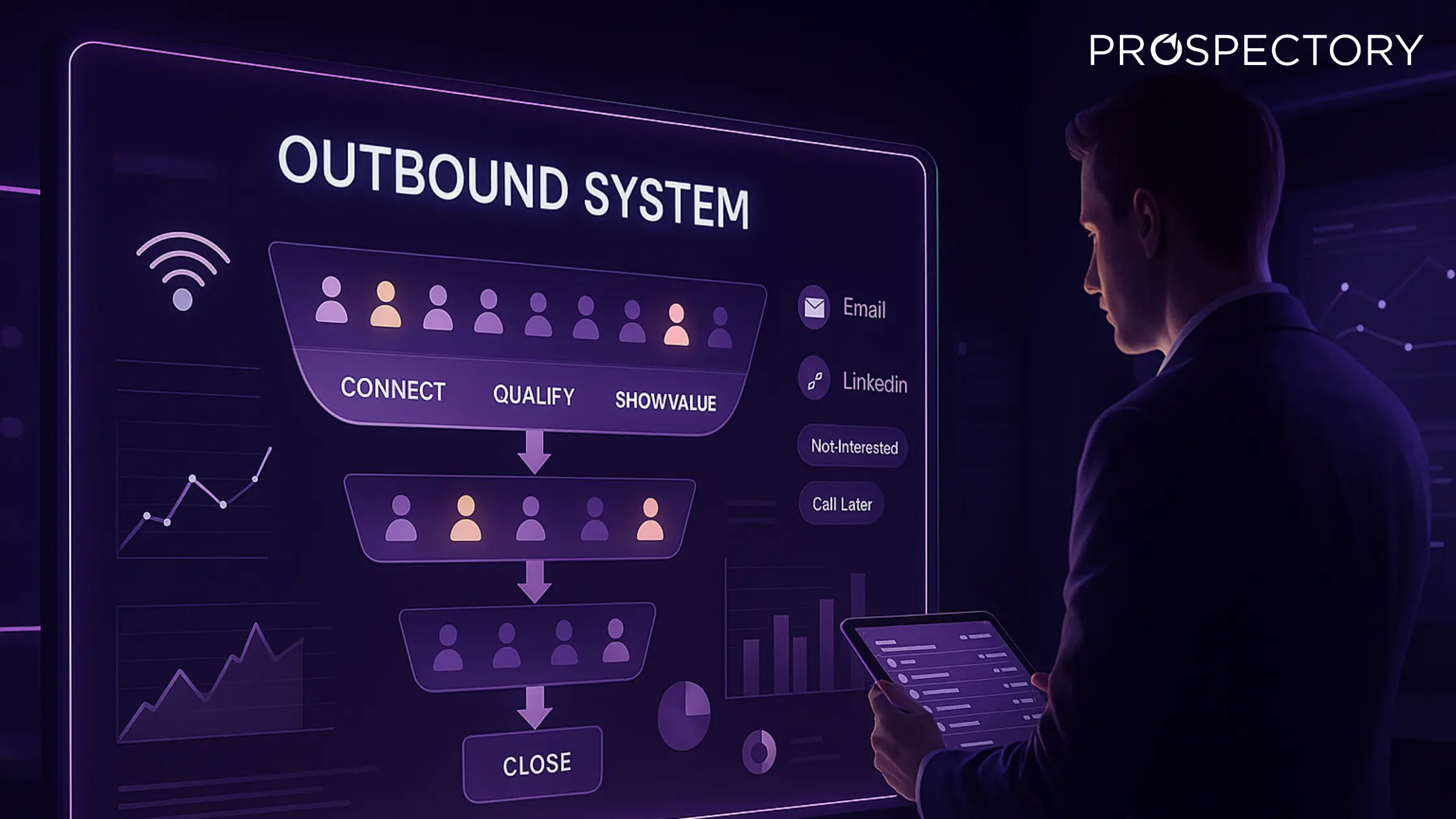What Is Prospect Data and How Can It Help Your Business?

Want to call someone without knowing anything about them? Sounds like a fun job, right?
OK, we all know that knowing nothing is the worst place to start, which is why prospect data is so important. Prospect data is to the information collected about potential customers, meaning you don't have to reach out with nothing. And with less than one percent of B2B sales done alone, we're talking about a lot of customers and a lot of information.
Businesses use this prospect data to improve sales and marketing efforts by identifying, targeting, and converting leads based on signs, signals, actions, and real moves that indicate propensity to purchase.
Prospect data's purpose is to provide a deep understanding of prospects so you can speak to them with the right message at the right time.
With accurate prospect data, you'll have a better understanding of your potential customer's professional needs and preferences. Next, without much more work, you can create customized outreach messaging that cuts the noise.
What kind of thing can you find out from all this data?
For starters, demographic information, buying behaviors, and engagement patterns will allow you to spot potential buyers based on more than just job title.
We can help you organize outreach lists based on attributes like tech stack or company financial health, so you're reaching out for people who are more likely to buy from you based on the behavior that we've spotted.
How Prospectory Helps You Target Better
- Improved Targeting: Knowing demographic and company info you get more targeting options with advertising platforms, such as Facebook and LinkedIn. Just because you want to sell them the same product, doesn’t mean messaging is the same for a Gen X’er as it is for a Gen Z’er. Messaging would also be unique for an enterprise Chief Revenue Officer vs. a startup founder, even though you’re selling them the same platform.
- Higher Conversion Rates: Targeting the right people and providing tailored messaging will drive higher conversions. Since you can track engagement, you can now prioritize leads that show more interest, meet specific criteria, or both.
- Cost Efficiency: Since you’re now speaking to your leads in a more tailored voice and focusing on only the most relevant leads, you are by default saving money and time. Cost per acquisition goes down and you can spend more money because what you’re doing works.
- Increased Customer Satisfaction: You can also cross-sell, upsell, and increase your margins for existing clients. Or, send targeted retention-based communications that provide value in their day-to-day roles, leading to higher satisfaction and reduced churn rates.
- Adaptation: Regularly analyzing prospect data helps to spot trends and shifts in customer behavior. This understanding can and should drive updates in product development and marketing strategies.
Prospectory & CRM = Workflow Magic
To use prospect data, it’s a best practice to link Customer Relationship Management (CRM) systems, lead management tools, and email/marketing automation platforms (or just get an all-in-one). You can…
- Organize and track prospect interactions.
- Automate follow-ups based on engagement history and put people in long-term nurture campaigns.
- Create lead-scoring algorithms to prioritize outreach based on conversion likelihood, then have internal notifications when someone crosses a certain threshold and automatically reach out to them with a “personalized” email.
We Help You Know Your Customers
You can categorize prospect data into several types, each serving specific purposes in your sales and marketing.
- Demographic Data: This includes basic attributes like age, gender, income level, education, and occupation.
- Firmographic Data: Relevant for B2B, this data includes company-specific details like industry type, company size, location, and financial health.
- Technographic Data: This refers to the technology stack used by a prospect's organization, and information about the software and tools they use.
- Behavioral Data: This tracks how prospects engage with a company’s marketing efforts, including email responses, website visits, social media interactions, and content downloads. Analyzing this data helps understand prospects' interests and purchase readiness, and should also be triggers for marketing automations.
- Engagement History: This records all interactions between the prospect and the business over time, showing details of emails sent, calls made, and meetings held. This helps gauge the prospect's level of interest.
- Recency Data: This reflects how recently a prospect interacted with your business or made a purchase (or didn’t make a purchase, abandoned cart campaigns anyone?), helping prioritize follow-ups with those more likely to convert based on their recent activity.
- Intent Data: This indicates the likelihood of a prospect making a purchase based on online behavior, or as some know it, propensity to buy. Obviously it’s not one type of data, but an amalgamation of everything you’ve seen above.
So there you have it.
The next step is to not spend hours on end putting together this information yourself, but to have us help.
That's what we're here for.
We run your ICP against a multitude of data points to come up with the exact match for your outreach.
Want to see how it works?
Schedule a demo today, and we’ll show you how we collect the most relevant leads using the different criteria laid out in the above article.
You can then send tailored messages, and the system contextually replies to prospect replies, creating rapport and increasing the chances of conversion. Reach out today to book your demo with Prospectory.
FAQ: Prospect Data
What are examples of prospects?
People or businesses who show interest, like downloading a guide, booking a demo, or starting a conversation. Or someone who might show interest in the future.
What is considered a prospect?
Anyone who could realistically become a customer and fits your target audience.
How to explain a prospect?
A prospect is simply a potential customer with a need for what you offer.
What are the three types of prospects?
Cold (don’t know you), Warm (interested), and Hot (ready to buy).
What’s a good prospect?
Someone who needs your product, fits your audience, and has the ability to buy.
What is meant by prospect?
A potential customer who could become a buyer if the timing is right.

Related Blogs








